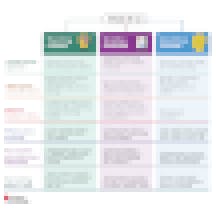AI tools have rapidly entered Language Arts classrooms. The proliferation of AI tools has outpaced efforts to understand how AI’s presence might change teaching practices or the role of the teacher. ChatGPT adds to the suite of AI tools that might be encountered in an ELA classroom, along with automated essay scoring, writing evaluation and feedback. As with all emerging technologies, it is critical to understand how we relate to these technologies in order to best leverage them for student learning. How do teachers view and position AI tools in their teaching?
We evaluated one writing platform that gave students immediate, AI-generated feedback, with unlimited opportunities to use the feedback to revise and resubmit their essays for better scores. We wanted to understand better the relationship between teachers and the AI employed by the automated writing evaluation tool. To explore this relationship, we interviewed 27 middle school writing teachers nationwide and looked at their teaching materials and student work.
Our analysis identified three main approaches to using AI: as a teaching partner, as a grading assistant and as a substitute teacher.

Teachers who used AI as a teaching partner saw AI feedback as a tool to enhance their teaching and their students’ learning. Their partnership with AI gave them an “extra set of eyes” that could collect individual and group-level data to inform their instructional decisions. Their classrooms were abuzz with writing and engagement, as one described a typical class period using the platform: “There’d be class time to work 20-30 minutes on whatever they needed—mini-lessons, go in and see the feedback or make revisions, whatever. If the feedback wasn’t specific or clear enough, I helped them. I grouped them by scores and dimensions, and then I’d try to hit 2-3 areas in 30 minutes and guide them.”
Teachers who used AI as a grading assistant emphasized its time-saving efficiency potential. AI as a grading assistant functioned as an “extra set of hands,” delegating basic grading (e.g., spelling, missing evidence) to a more efficient system and reserved holistic and thematic feedback (e.g., argument coherence) for teachers. Unlike the teaching partner approach, however, these teachers stopped short of leveraging AI for instructional enhancement, like grouping students in data-guided ways for mini-lessons. One teacher emphasized the independent nature of students’ work: “I’m facilitating, and they’re working… [the AI is] nice because it gives them something to work on. Each time they click the signal check, they have four opportunities of things [sic] to act on.”
Finally, teachers who used AI as a substitute teacher implemented an approach resembling what many say they fear when it comes to allowing AI into classrooms: that AI-equipped systems could replace teachers. While some teachers in this category likely have good reasons for doing so (e.g., insufficient training/experience, difficult working conditions), teachers in this category entrusted the entire teaching, scoring and feedback process to the platform. One teacher explained: “We looked at it as this AI is another teacher you’re writing for, and you need to figure out what they want to be successful in their class. I would never feel threatened by something like this or like it would replace me. I used it as a tool that was really well-developed and impressive and saved me time.” While some teachers’ willingness to use AI tools this comprehensively shows how powerful the tools have become, we have reservations about this type of under-supervised use of AI by students due to the inaccuracies and biases still displayed by AI tools.
At a convening of ten teachers who had used this particular AI, teachers shared that these three approaches to AI were “validating” and matched their own experiences with one caveat. Many felt that rather than using one approach all the time, they exhibited all three approaches at different times, such as starting by using AI as a substitute or assistant when new to it and moving towards partnership with time or using AI as a substitute to simulate a testing environment to prepare for test season but being the partner when implementing their argumentative writing unit.
This work underscores the need for the field to develop AI platforms with teachers and their potential practice decisions in mind. For example, teachers at our convening wondered how the platform could be designed to naturally support teachers in developing their use of AI into a partner model over time. Teachers emphasized that it is critical that AI-based systems never replace the skillful and artful expertise of an excellent teacher. Ensuring intentional, educator-informed design of AI tools for classrooms could prevent the further deepening of inequities experienced by historically marginalized students and by teachers experiencing difficult working conditions. These three approaches offer a starting point to think about designing such tools in a way that expands equitable opportunities for students and affirms the role of teachers in teaching.



